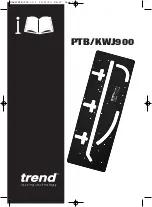
6
2. General application notes
2.1
Only use
operating heads
and
insulating sticks
that are rated for e.g. the nominal voltage /
nominal frequency of the installation (see 5., rating plate).
2.2
Only contact the handle of the
insulating stick
and operate it from a safe location so that the
user maintains the necessary safety distance from all live parts of the installation to ensure that
he is not at risk.
2.3
Keep the
operating head
as far away as possible from live or unearthed parts of the installation.
2.4
Prior to installation, check the
operating head
,
insulating stick
or other components for signs
of mechanical damage (e.g. tight fit of the red ring, cracks or deep scratches in the insulating
clearance and extension area…). Withdraw faulty single parts from service.
2.5
Clean soiled components with a clean lint-free cloth before assembly.
2.6
Remove tough layers (pollution) using the cleaning agents mentioned in these instructions for
use (see 7.).
2.7
The
operating head
is labelled “Not to be used under wet conditions” meaning that it may be
used in indoor and outdoor locations, but not in wet weather conditions.
2.8
Wipe dry condensed damp components (e.g. due to extreme temperature fluctuations) before
use. If necessary, wait until the components have reached the ambient temperature.
2.9
Observe the preset limit values when using the
operating head
:
Housing and adapter: -25°C to +55°C
Camera and battery: 0°C to +40°C
2.10
Personal protective equipment (PPE) must be worn when using the combination of
operating
head
and
insulating stick
in electrical installations, for example:
Â
Arc-fault-tested head and face protection
Â
Arc-fault-tested protective gloves and clothing
Â
...
Содержание SET DIGIK
Страница 21: ...21 ...
Страница 25: ...3 10 Recommended accessories for the operating head optional 19 11 Applicable standards 20 ...
Страница 43: ...21 ...
















































